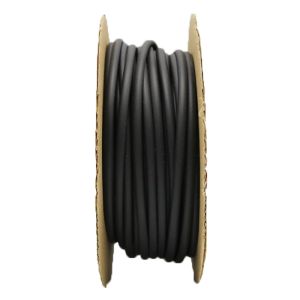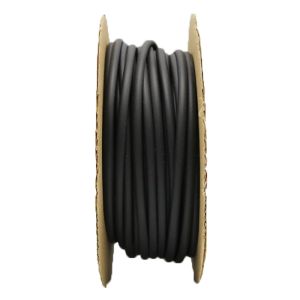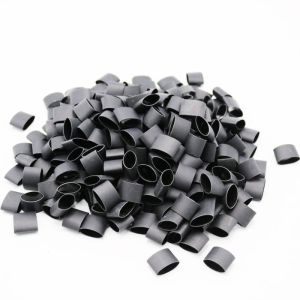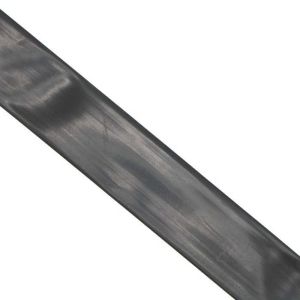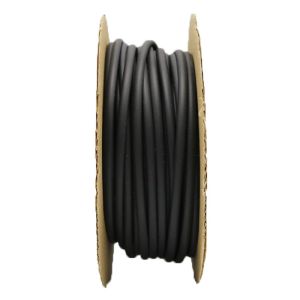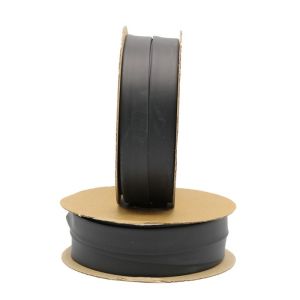2:1 Polyolefin Heat Shrink
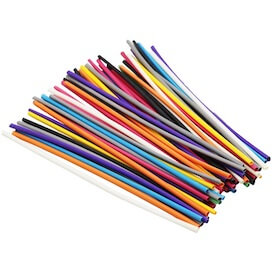
Polyolefin 2 to 1 Single Wall Heat Shrink Tubing
Polyolefin is the most common kind of heat shrink material, with 2 to 1 heat shrink being the most popular size option. Its properties, including its ability to shrink to half its original size, make it a great choice for most applications.
It's part of a family of polymers, which are plastics made up of chains of very large molecules, each with repeating subunits. Polymers can be natural or synthetic, and they have a wide range of different properties, as can be seen in these very different natural polymers: shellac, amber, wool, silk, and rubber.
Creating the heat shrink
The ability to shrink to half its starting size when heated is achieved during manufacture. The tubing is originally extruded at its minimum diameter, then the molecules are cross-linked, which creates a structural memory of this larger size.
Next, the tubing is heated to its crystalline melting point and expanded, usually by being exposed to a vacuum. It's finally rapidly cooled, which leaves it at the larger size until heat activates the "memory" of its original size and it shrinks.
Heat shrink ratios vary from 2:1 up to 6:1. This figure indicates how much the tubing shrinks when heated. In the case of 2:1, the final diameter is as small as 1/2 of the original size.
Types and colors
Single-walled heat shrink is a single layer of material that can be of any thickness. It is easy to handle and sufficient for most applications. It lacks the inner adhesive layer found in double-walled heat shrink, which is generally necessary in applications that will be around moisture or water.
Polyolefin heat shrink tubing comes in a variety of colors. Shrink temperature is 120°C (229°F), and the material can perform continuously between temperatures of -55°C to +135°C (-67°F to +275°F). However, most polyolefin heat shrink is not UV resistant.
It's available in rolls, with standard heat shrink, low temperature heat shrink, ultra-thin heat shrink, glossy heat shrink, and semi-rigid heat shrink versions available. Depending on the product, heat shrink tubing is available in up to 12 different colors, and pre-shrunk diameters from 3/64" to 6". Most forms (except for ultra-thin and semi-rigid) meet the requirements of SAE AMS-DTL-23053/5 (formerly MIL-I-23053/5, MIL-DTL-23053/5), Classes 1, 2 (Clear), and 3.
A: A polyolefin is a type of polymer plastic that is created by combining simpler molecules into more complex 3D structures that provide for a much stronger overall material. The simple molecules may be all the same, or several different ones, and they may be natural or synthetic. Polyethylene, which is used in plastic bags, packaging, and beverage bottles (among other things) is a type of polyolefin.
Polyolefins are considered non-toxic, which is why they're common in both medical usage and food storage. Generally speaking, the only elements in a polyolefin are hydrogen and carbon, although they are sometimes treated to make them more resistant to ultraviolet light or oxidation.
A: The types you asked about, among others, are designed for heavier uses and are generally resistant to chemicals, high temperatures, or diesel fuel. As such, they are made of completely different materials than polyolefin and are typically much more expensive. For example, a 4' long piece of 1" polyolefin heat shrink tubing can cost under US$10, while the PTFE version can cost nearly US$150.
Polyolefin 2:1 heat shrink tubing is intended for general use and will be adequate for most purposes. If you're not shrink-wrapping diesel fuel or chemical lines or running cable through extremely hot environments, then it will more than likely do the job.
A: The simple answer is that the chemicals required to make any color of heat shrink tubing flame resistant aren't noticeable with a solid-colored, opaque material. However, adding them to a clear, transparent material would cause it to cloud up so that it would no longer be clear.
There are some versions of "clear" tubing out there that are flame retardant, but they aren't actually clear after heat shrinking for just this reason.
LEARN MORE
- Maximum continuous use temperature 135°C (275°F); low-temp and ultra-thin, 125°C (257°F); glossy heat shrink, 105°C (221°F).
- Operating temperature range: -55°C to 135°C (-67°F to 275°F); low-temp and ultra-thin heat shrink, -55°C to 125°C (-67°F to 257°F); glossy, -55°C to 105°C (-67°F to 221°F).
- Shrink temperature: 120°C (248°F); ultra-thin, 100°C (212°F); low temperature 80°C (176°F); glossy, 60°C (140°F).
Typical applications include insulation, wire identification, wire bundling, mechanical protection, color coding, lightweight harnessing, physical/electrical protection of components, strain relief, and solder insulation. (Note: Ultra-thin wall heat shrink tubing is only available in black and low-temp heat shrink is only available in black and clear, so they are not useful for color coding).

